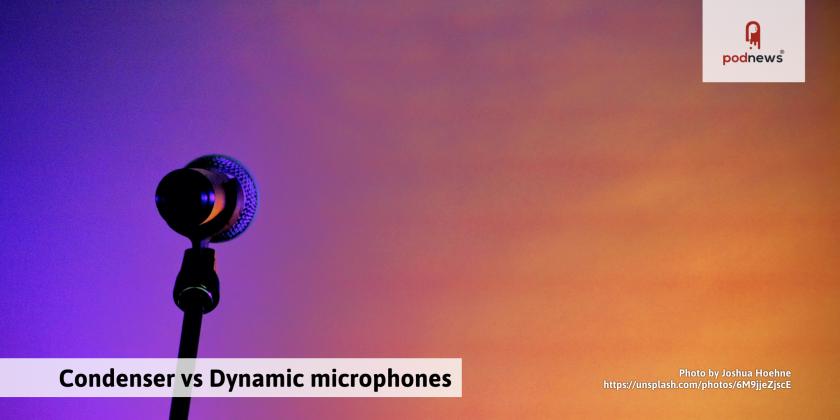
The difference between a dynamic microphone and a condenser microphone for podcasters

This article is at least a year old
We’ve all seen the claim in podcasting groups - everyone says:
Get a dynamic microphone - it picks up less echo and room noise than a condenser microphone.
This isn’t true.
Any type of microphone, with the same pickup pattern, has the same response to quieter sounds vs louder sounds in any room. It’s the way physics works.
It simply isn’t the case that a dynamic microphone has some kind of rejection of room echo.
If you have a problem with an echoey room, buying a dynamic microphone and using it in the same way as your old condenser microphone won’t make any difference.
So - why do people recommend dynamic microphones?
It’s all to do with microphone technique.
A condenser microphone is more sensitive. It converts noise into electricity at a higher level than a dynamic microphone. It’s more sensitive to all noise - the sound of your air conditioning, and the sound of your voice.
However, if you get up close to most condenser microphones - closer than the width of your hand - then you might be too loud for it: saturating the microphone input and causing distortion. And because of the way a condenser microphone is typically built, it is much more sensitive to plosives - the popping sound if you say “pop” too close to a microphone.
That means that most people use a condenser microphone further away from their mouth. And the further away you are from the microphone, the more it’ll pick up everything else - the room noise, your air conditioning, and traffic noise from outside.
A dynamic microphone is less sensitive, and is designed for close work. You can be right up to the microphone - closer than the width of your hand. You’ll have no issues with distortion doing this.
A dynamic microphone is also built to be less sensitive to plosives - they normally have a popshield built in - so, as long as you’re using it correctly (typically at a slight angle) you’ll not have any problems with “p” sounds.
The closer you are to the microphone, the louder you are in relation to the background noise. So the quieter the background noise becomes.
In short
Dynamic microphones don’t magically reject room noise.
A dynamic microphone is absolutely the right choice for a podcaster, and it will cut down on the room noise - but only if you’re using it right.
My thanks and acknowledgements to broadcast engineers in three Facebook groups for patiently answering my questions
































































































